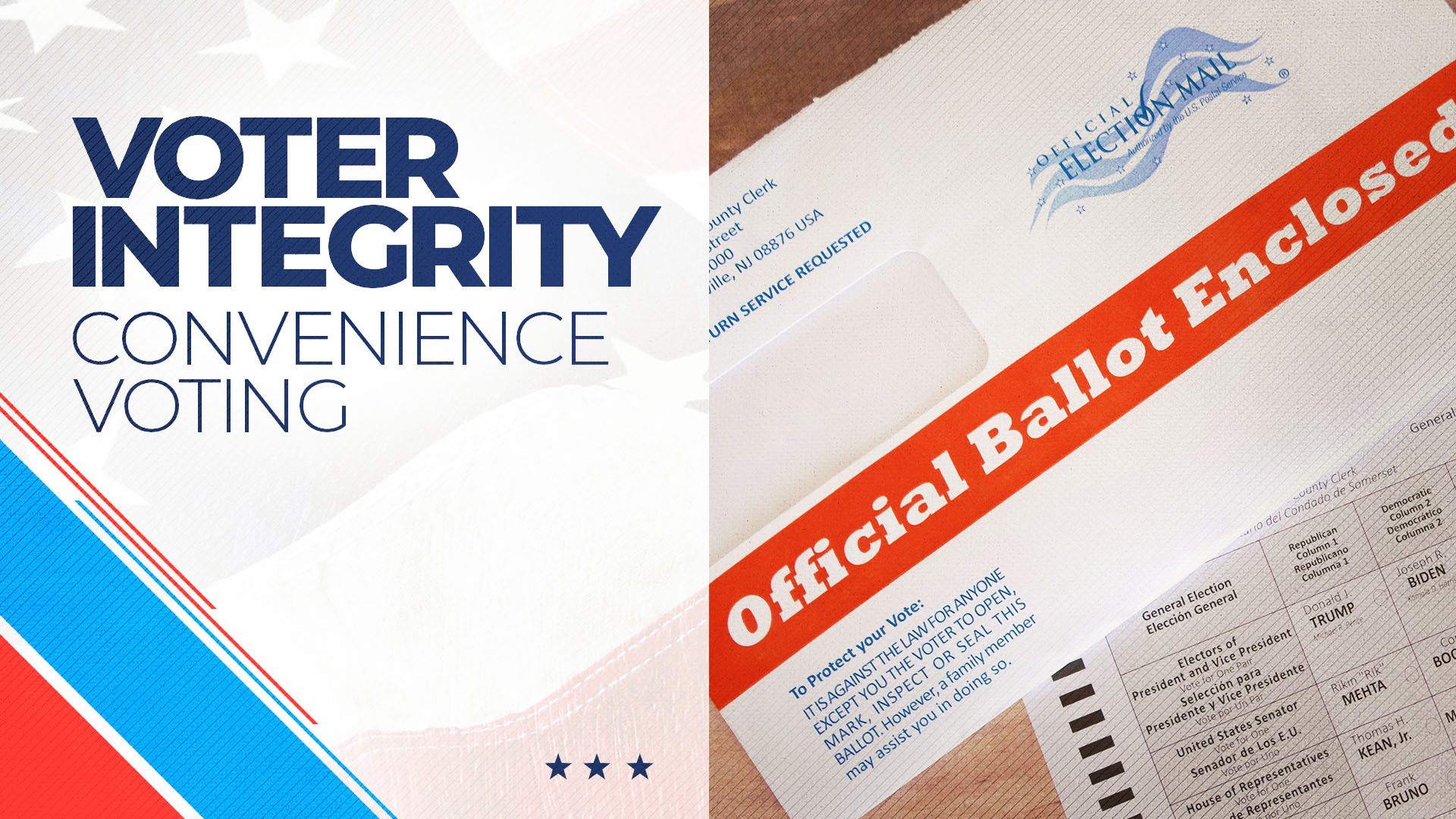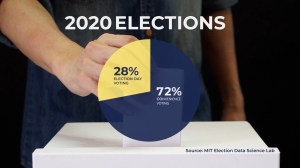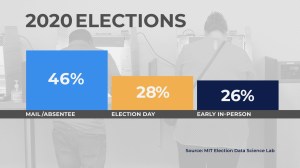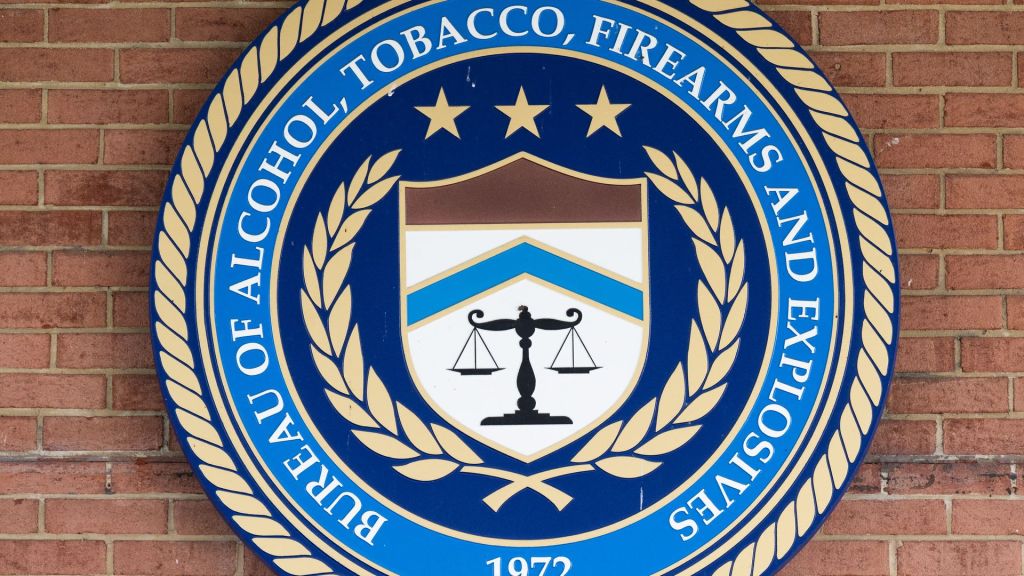
Commentary
-
Our commentary partners will help you reach your own conclusions on complex topics.
The 2020 elections revealed significant changes to the American electorate. But the biggest change wasn’t who voters supported, it was how they cast their ballot.
72 percent took advantage of what’s called convenience voting – which includes early in-person, mail-in and absentee voting, among others.
Shaw says: “Now voters seem to like these practices. I mean, who wouldn’t?”
That’s professor Daron Shaw from the University of Texas at Austin.
Video 4 Shaw SOT: But it’s unclear whether, and this may be surprising, it’s unclear whether convenience voting actually increases turnout.”
States around the country significantly increased voting options in 2020 to prevent Covid transmission.
But a Stanford study found that people who used those options would have voted even if they weren’t available.
Shaw says: “One of the axioms in practical politics for a number of years, is that what early voting allows you to do is convert someone who’s an election day voter into an early voter. But it doesn’t actually add voters to the tally.”
MIT data shows the 2020 election was the first time the predominant voting method nationwide was by mail and absentee, totalling 46 percent of the votes cast.
Shaw says: “The mail in practices with respect to absentee ballots or states with pure mail in systems vary considerably.”
For instance in Arizona ballots must be received no later than 7pm on election day.
In California, they have to be postmarked by election day, but can arrive up to seven days after.
Shaw says: “So the tabulation processing of ballots in California is pretty tricky because sometimes election officials won’t receive a ballot until multiple days after the election”
There is one downside of early voting. It can lead to what’s called an asymmetry of information.
Shaw says: “we know a lot about presidential candidates prior to election day. So the fact that somebody votes early is probably not terribly consequential. But in a down ballot race, in a city council race, in a race where you don’t know very much about the candidates running for office, it’s possible that somebody that casts their ballot three weeks before election day is going to miss out on substantively important information.”
So to wrap things up, voters like convenience voting, but it does not lead to a big increase in turnout.
Want to learn more about voting in America? Continue watching our voting and election series on youtube and straightarrownews.com.
-
Campaign finance: Money and politics’ relationship gets stronger
Money and politics go hand in hand and the totals going back to 2008 reveal the relationship is only growing stronger. In 2020, spending in federal elections totaled $14.4 billion. It’s been increasing for more than a decade: 2016: $6.5 billion 2012: $6.3 billion 2008: $5.3 billion Does money drive election results? Empirical analysis shows… -
Voter ID: Facts and myths of identifying yourself at the voting booth
There’s an awful lot of debate about voter identification. Some fact, some fiction and a surplus of opinions. But what are the rules surrounding voter ID? Does it impact turnout? This article answers all those questions, but to sum it up: we certainly don’t have compelling evidence that there’s much to be gained from these… -
Electing our leaders: How election systems differ around the world
Free and fair elections are the foundation of democratic societies. But not all elections are the same. There are two main types of election systems: single member, simple plurality, or SMSP, and proportional representation. This article will explain how they both work and how they correspond to elections in the United States and around the… -
How voter registration works across the United States
When U.S. citizens want to exercise their right to vote in America, they must first register. But the rules and requirements vary from state to state. “It’s important to remember that we do not register nationally in the United States. Rather we register at the level of the county,” Professor Daron Shaw said. Why are… -
Same day, automatic registrations simplify voting in America
Voting in the United States is largely a two-step process. First you register, then you vote. But two options make voting a one-step process: same day registration and automatic registration. “The United States is somewhat distinct compared to other democracies in that we require voters for the most part to register prior to election day…
Latest Stories
-
 Getty Images
Getty Images
USDA pauses scholarship funds directed toward HBCU students
-
 Reuters
Reuters
Trump returns to CPAC, criticizes Biden and comments on Ukraine deal
-
 AP Images
AP Images
Trump’s Department of Justice removes database tracking police misconduct
-
 Getty Images
Getty Images
DOE to investigate Maine Education Department over trans athletes, Title IX
-
 Reuters
Reuters
New coronavirus discovered in bats similar to COVID-19
Popular Opinions
-
In addition to the facts, we believe it’s vital to hear perspectives from all sides of the political spectrum.
Latest Opinions
In addition to the facts, we believe it’s vital to hear perspectives from all sides of the political spectrum. We hope these different voices will help you reach your own conclusions.
The opinions published in this section are solely those of the contributors and do not reflect the views of Straight Arrow News.























Latest Commentary
We know it is important to hear from a diverse range of observers on the complex topics we face and believe our commentary partners will help you reach your own conclusions.
The commentaries published in this section are solely those of the contributors and do not reflect the views of Straight Arrow News.
Dr. Frank Luntz
Pollster and Political Analyst‘Getting rid of them’: Americans discuss Trump and immigration
‘Woke’: Why some Biden 2020 voters backed Trump in 2024
‘A promise’: Cadets describe their journeys at West Point